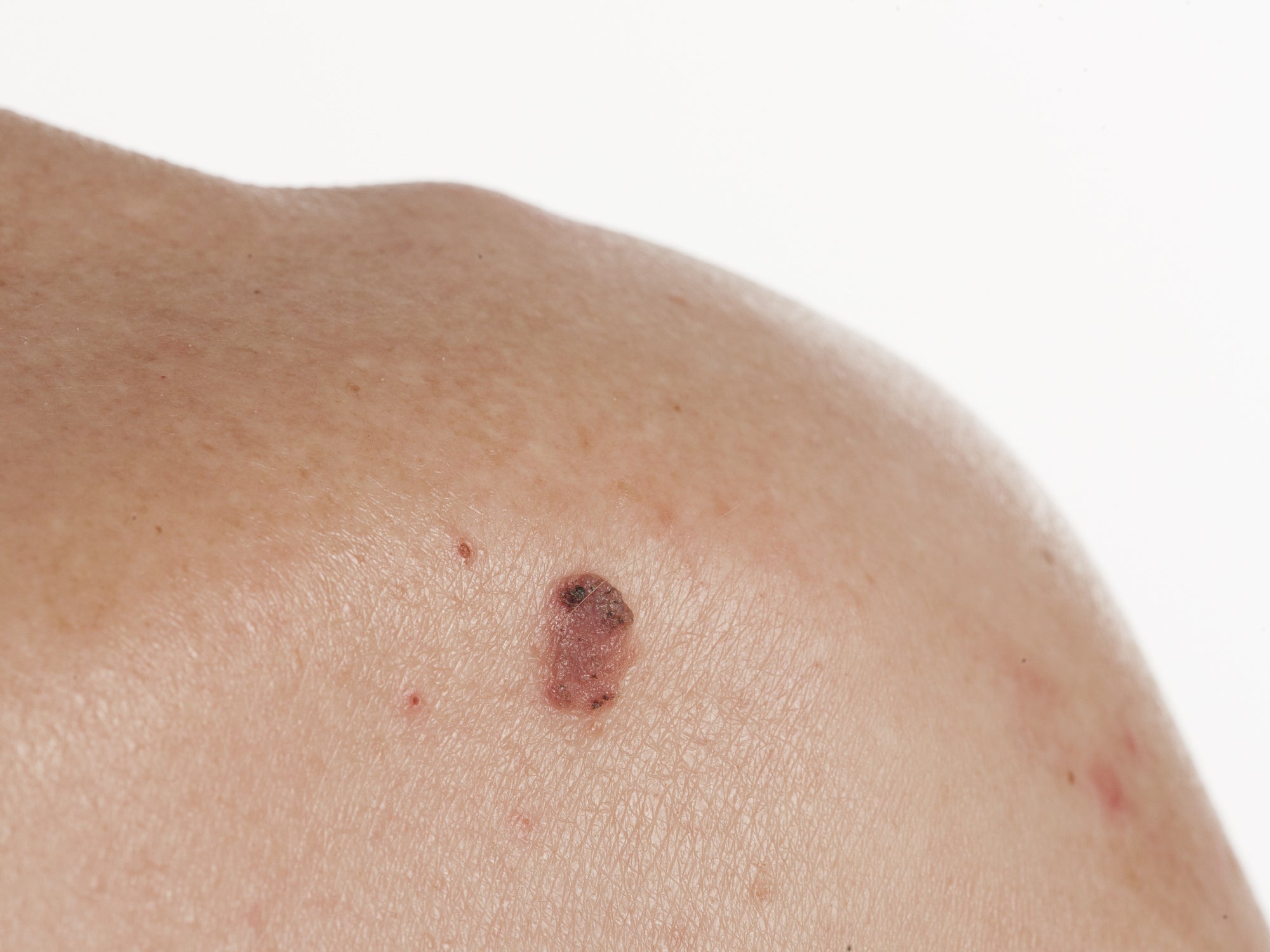What is actinic keratosis?
Actinic keratosis, also known as solar keratosis or AK for short, is a relatively common skin issue that tends to occur on sun damaged skin. It’s common enough that as many as half all elderly white-skinned people end up developing actinic keratosis lesions.
AK lesions occur on skin that has been exposed to sun over many years. They appear on bare forearms, the backs of hands, the upper chest, on bald heads, foreheads and faces. People most at risk are pale-skinned, middle-aged or elderly, burn easily and have spent a lot of time, over many years, in sunny regions or on tan beds.
Actinic keratosis lesions tend to be small and bumpy, sometimes even wart-like in appearance. They feel characteristically ‘gritty’, but can also look scaly, dry, thickened, inflamed or discoloured in comparison to surrounding skin. AK can sting, or itchy, and can sometimes be quite uncomfortable.
What is squamous cell carcinoma?
Squamous cell carcinoma (SCC) is a type of skin cancer. Luckily, it’s very rarely fatal, and is easily treatable if caught early, so it’s important not to overlook warning signs.
SCC has much in common with AK; like AK, SCC develops on exposed skin that has been damaged by UV radiation over a period of many years, such as the skin of the face, forehead, bare scalp, the back of hands, forearms etc. Unlike AK, SCC lesions can also develop on scars or damaged skin.
They can look pretty similar too, with SCC lesions appearing rough, scaly, thickened or wart-like in appearance. Sometimes they can bleed or crust over.
Why is it important to distinguish between them?
It’s important to get a diagnosis from a doctor if you notice any new patch of rough, scaly, crusting, bumpy on exposed skin, because while actinic keratosis lesions are benign and may even resolve on their own in time, squamous cell carcinoma is a type of skin cancer and will need treating.
The good news is that most incidences of SCC are treatable and are very unlikely indeed to be fatal… but the risk still exists and is not worth ignoring. A doctor who diagnoses AK will decide whether to leave it but monitor the situation carefully, treat it with topical medicated creams, or get rid of it with surgery, cryotherapy or photodynamic therapy. It will depend on the severity of the lesion, how uncomfortable it is and whether it is a single lesion or widespread.
Other concerns
The other reason to get a professional diagnosis is that people who are at risk of AK and SCC are also more at risk of developing more serious skin cancers, like basal cell carcinoma. That’s because the risk factors are similar in both cases: being pale skinned, past middle-age, easily burnt, a sun bed user or someone who’s spent a lot of time outside over the years with exposed skin. So if you have AK lesions, you may also develop BCC.
So How Do You Tell The Difference?
The takeaway is that it’s not easy to tell the difference between AK and SCC. They look very similar and are both very variable in appearance; they appear on similar areas of the body, and an AK lesion can develop into SCC. So do get any worrying bump, spot, wart or lesion checked out by a doctor, especially if you fall into the high risk group.
See our article What Is The Best Treatment For Actinic Keratosis? for more details about preventing and treating actinic keratosis.
Although actinic keratosis isn’t something you can treat with emollients, moisturising your skin with intensive, non-irritant creams or salves can help keep skin in good, healthy condition before and after treatment, and can help ease the uncomfortable symptoms of itchy skin.
We advise customers not to apply oil-based balms like Skin Salvation to skin exposed to direct sunlight, as the high oil content can cause burning and we don’t add sunscreens to our products. Apply last thing at night instead!
Recommended products:
Balmonds Skin Salvation
with hemp and beeswax
Balmonds Cooling Cream
with shea, menthol, aloe vera & lavender
Balmonds Daily Moisturising Cream
with shea butter and calendula
